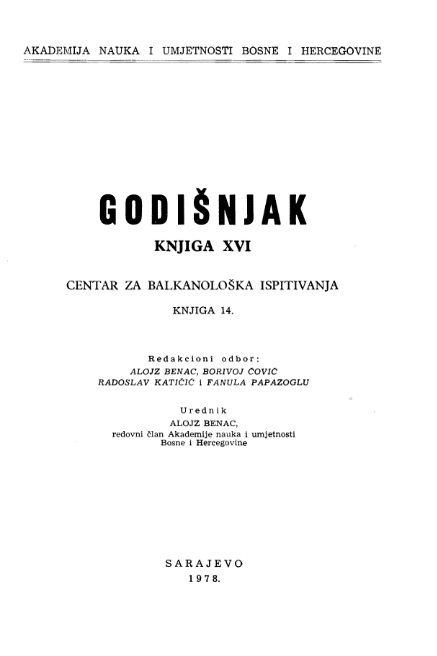The Role of the Southern Cultural Model in the Polish Neolithic
The Role of the Southern Cultural Model in the Polish Neolithic
Author(s): Anna Kulczycka-LeciejewiczowaSubject(s): Archaeology, Cultural history, Social history, Ancient World, Culture and social structure
Published by: Akademija Nauka i Umjetnosti Bosne i Hercegovine
Keywords: Polish Neolithic; culture; Neolithic culture; mesolithic tribes; Neolithization;
Summary/Abstract: The formation of the first neolithic culture in the Oder and Vistula basins was part of a widespread process, involving the emergence throughout Central Europe of new socio-economic systems, based on the principle of food -production. These profound transformations affected the basins of the great Central European rivers around the middle of the V millenium B. C., perhaps even — if we accept dendrochronological evidence — as early as the close of the VI millenium (H. Quitta 1971; E. K. Ralph, H. N. Michael, M. C. Han 1976) Also at this time the first confrontation took place between the cultural model — hitherto unchallenged on these territories — of the late mesolithic tribes of gatherers and hunters, with the new neolithic model dominated by agriculture and animal rearing. As is well known, this early period of the ’’neolithization” of Central Europe was connected with the expansion on our continent of Linear Pottery Culture, a model derived from the neolithic cultures of the Near East but developed and transformed in the Balkans. The ultimate form of this model in its inland version, which differed from the coastal counterparts, came from the great Starcevo-Criç milieu (R. Tichy 1960, p. 422; H. Quitta 1964; 1971, p. 55; S. Tabaczynski 1970, p. 73). Subsequently the Central European settlement groups adapted it to the local ecological conditions, gradually enriching it with their own experience and achievements. These tribes — of the so-called southern or Band Pottery cycle — managed moreover to preserve the basic features of this cultural model throughout the entire period of their development, lasting well over 1500 and perhaps even for 2000 years. [...]
Journal: Godišnjak Centra za balkanološka ispitivanja
- Issue Year: 1978
- Issue No: 16
- Page Range: 105-115
- Page Count: 14
- Language: English

